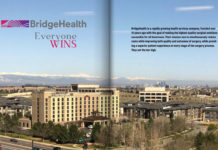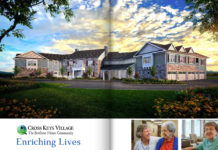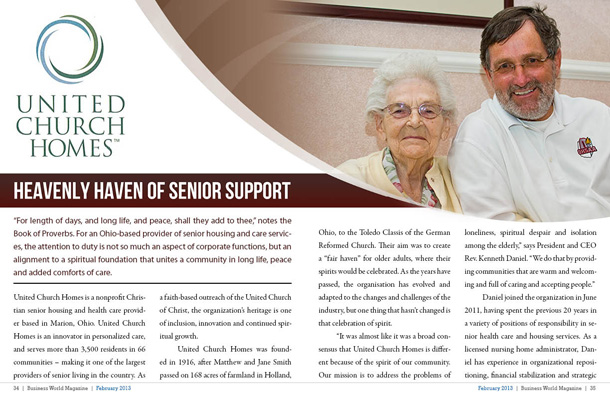
A century of care
Twilight Aged Care is a not for profit, community based organisation with a legacy. It was established nearly 100 years ago, in 1912, originally named Twilight House. In 1915, they opened their first home in Mosman, New South Wales. “We grew largely by donations,” says John Stuart, CEO. “Our first three homes were all donations. They were initially residential homes, but we developed them into facilities.” Recently, Twilight Aged Care closed the original home in Mosman and purchased an established home in Gladesville, and now has 160 residents between all of their locations.
Before Twilight Aged Care, Stuart spent about 30 years working in the New South Wales health system in a variety of roles. “I decided that 30 years was enough and I wanted to do something else,” he laughs. He got a call from a recruiter and ended up at Twilight in 2004. Today he runs the business as CEO, and because he has a clinical background, he says he has a keen insight into the care delivery system and process. In his new role, Stuart and his chairman have gone to great lengths of modernise and improve the company.
A changing industry
Stuart has put so much effort into reinventing his systems because, in the time he has been there, aged care has changed quite a bit. One factor behind that change is the government bringing aged care under the federal system, which has resulted in an increase in quality compliance standards. “I think the bar has been lifted in terms of quality of care that is provided to older Australians over the last 10 years,” says Stuart. “Having said that, it doesn’t come easy because there are people who might say aged care is the most regulated industry in Australia, in terms of the frameworks we have to work within.” Managing care requirements and expectation with the money received through government subsidies is difficult, Stuart says, because those subsidies do not keep up with inflation. And as the quality of aged care in Australia has goes up, so does the cost. Thus, managing money is important. “Twilight, like most other providers, has an investment strategy to augment returns from accumulated surpluses and accommodation bonds and we are fortunate to have JB Were as our partners,” says Stuart. “Our investment committee has a strong mandate and JB Were assists us with information on the market, trends, benchmarking performance of our investments against the ASX 200 and other indicators. The last three years have been very unstable, however our strong management of our funds under investment and the strategic decisions we have made has maintained our portfolio in a healthy state.”
Still, contending with costs can be a challenge. “The cost of providing a building that meets market expectations is enormous and as providers we’re feeling pressed, because we don’t get the business until we offer the product – but the economics don’t stack up.” The charitable sector is responsible for delivering a very large proportion of aged care, so that means there is a lot of burden on them to provide the services that people require. The expectations of families seeking care have also changed over recent years. Baby boomers making decisions on accommodation for their ageing parent has raised the bar in terms of the quality of accommodation available and the ambiance of the facility. “We have worked with Quicksew for many years when refurbishing our facilities,” says Stuart. “Their range of hard and soft furnishings is wide and keeping with our domestic feel in our homes has allowed us to move away from the highly institutional look and feel seen so often encountered in aged care environments.” However, the increased expectations do come at a cost to providers and places further pressure on their capital expenditure, where those funds are limited.
These are just some of the challenges. The solution, Stuart says, is the government anteing up. “One of the options that the industry has been lobbying for is accommodation bounds in high care,” he says. In other words, the government needs to free up more capital to accommodate people coming into the industry with high care needs. The Productivity Commission has made recommendations around that, and we’re hoping the government will pick them up.” At the end of the day, he says, if the government is going to sponsor care delivery then they’ll have to spend more.
Another aspect of the aged care system that has changed since Stuart started his latest job was the age of people entering the industry. New residents are becoming older and older, because the money delivered into community based services designed to keep people in their own homes has increased tenfold over the last 10 years. “Now I think that’s a wonderful thing because people want to stay in their own home and stay in their community,” Stuart says. “It does mean, though, that people coming to us are older and have more advanced health problems, which means the burden of care on aged care providers is greater.” Only five years ago, the average resident would enter the system with a low care classification, whereas today there is a greater proportion with high care classifications. Additionally, because of delayed entry into residential aged care, the overall length of stay has shortened. “We still have some residents who came into care 10 years ago, but the majority of new residents over the last 5 years particularly have a length of stay of 18 months.”
These are all challenges and changes that impact the entire industry, and that Stuart has had to tackle as CEO of Twilight. One challenge plaguing the industry that he has not had to contend with, however, is attracting and retaining a staff. “We don’t have difficulty in that area, which is unusual because we’re in the north of Sydney. It’s an expensive area to live in, so people who work for us generally travel some distance to go to work.” This is a testament to the strong reputation Twilight Aged Care has as an employer – their staff are even known to refer their friends, and when Stuart put a classified ad online for a new administrative assistant, he received over 50 applications. “We’ve got a good network of people who like working for us,” Stuart says.
Because they are not starving for personnel, Twilight is able to ensure to that the people they do have are qualified. “We made a decision a couple years ago that we were only going to employ care staff who completed an aged care qualification,” Stuart says. “Prior to my coming to the organisation there was an attitude that if you walked up to the door and you were breathing, you’d get a job.” After lifting the bar, Stuart said he noticed results immediately. “It’s improved the overall capacity we’ve had with staff in terms of them being able to deliver care.”
Ahead of the curve
One thing Stuart has focused on since joining Twilight Aged Care is modernisation. “Of the things we’ve really got ahead of the curve on is information technology and working smarter,” he says. “The regulation, the record keeping and the requirements on us in terms of information management is enormous. We’re not quite paperless yet, but we will be shortly, and all our systems were implemented to create productivity efficiencies or to improve our care delivery. We can spend time focusing on improving our business rather than maintaining data.” This is a big change from when Stuart first arrived, when everything was done manually. “Being smart about the way we use technology to improve care has also been a big focus for us,” says Stuart. “For example, we implemented the SIMAVITA continence assessment program to not only assess continence but also ensure that the resident had the right product for their particular needs. Who would have thought five years ago that a resident could wear a continence aid with an inbuilt transmitter to measure the frequency and volume of a residents voiding pattern and send that information to our computer systems? Not only have we reduced the cost to residents by ensuring they have the correct product, but we have made them more comfortable, and we have improved our assessment process to ensure we collect the appropriate funding for incontinent residents. It’s a win-win for everyone.”
Also, the shift to a paperless office has the dual benefit of being both productive and good for the environment, which is something Stuart says he is very focused on. “The amount of paper that’s used everywhere across the industry is enormous. As much as we can cut down not only our consumption of paper products, but our waste as well, it’s not only good for the environment but it is good for our balance sheet.” Twilight uses iCare Clinical Management Solution for all its resident care documentation. “Our record keeping has improved significantly because of the simplicity of this system and we are capturing so much more information on the care planned and delivered to residents that we did on paper. The system has also resulted in productivity improvements for care staff as they can invest the extra time gained from reduced documentation effort into care delivery. This system provides the capacity to review resident records from any location in the company, including my office,” says Stuart. “This is particularly useful if I am having a discussion with a relative about a care concern that they might have, as I can read up to date information on that resident as we speak.”
Managing staff information can be fraught with difficulty, given the legislated requirements that must be met. “We implemented a staff management system, RosterLive, some years ago and achieved a productivity saving of 38 hours per fortnight in eliminating redundant manual labour processes,” Stuart says. “All of our time and attendance data is managed electronically, and as well as direct efficiency gains, we have reduced our error rate in payroll processing to zero. This has been of most benefit to staff who can feel comfortable that their pay each fortnight will be correct. Our managers can also see the impact directly on the budget from the rostering decisions that they make as they are preparing their rosters, and since our staff costs are approximately 80% of our expenditure this is an area of management that requires serious attention. Simplifying the process and having accurate up-to-date information ensures that our staffing expenditure does not become a runaway train.”
Because of the work Stuart has done with the company so far, the opportunities for the future and bountiful. “I’ve spent the last seven years focusing on getting the company into a robust position,” he says. Now, with that information technology in place, the competent and caring staff, and strong management team of Twilight Aged Care can hit the ground running on future developments. That was what happened with their latest home in Gladesville, for example. “We will continue to look for opportunities to grow and expand, particularly in residential care. There may well be a future for us in other community based services as well.” The board and Stuart plan to continue to revisit their corporate strategy and look forward to expand their legacy another 100 years.








